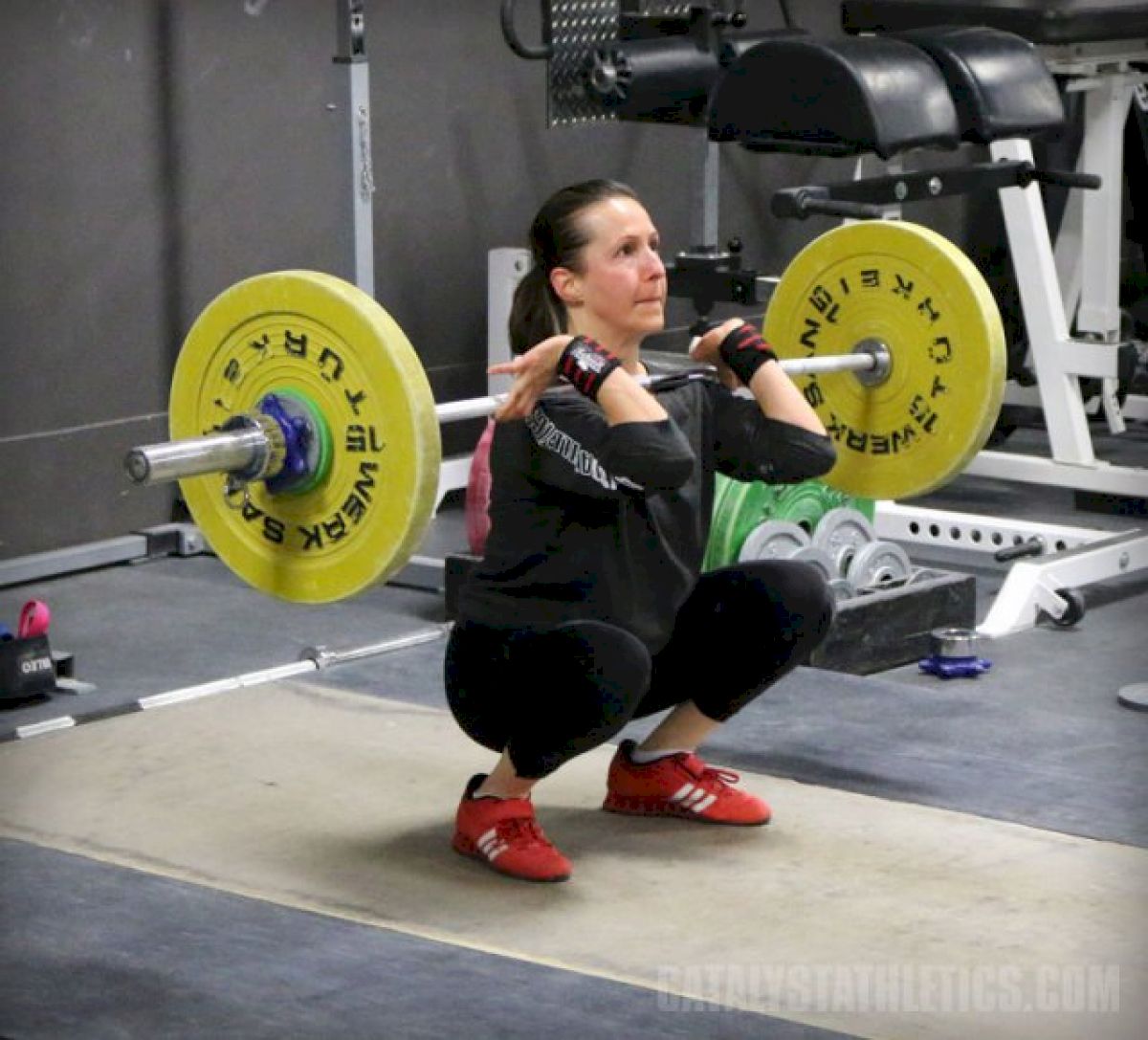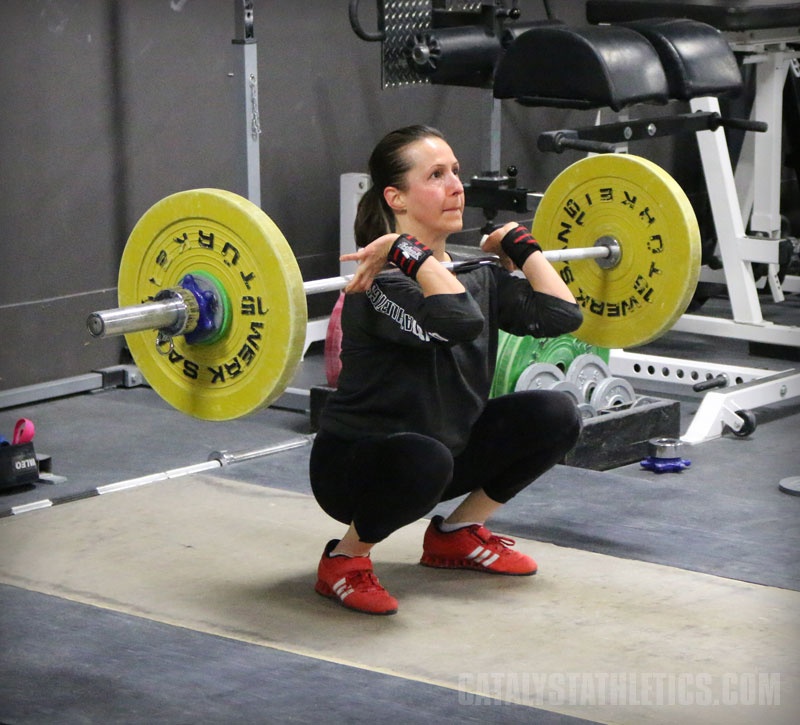Focus On Flexibility To Improve Your Lifts
Focus On Flexibility To Improve Your Lifts


Greg Everett is the coach of the Catalyst Athletics weightlifting team and author of the most popular book on weightlifting, Olympic Weightlifting: A Complete Guide for Athletes & Coaches. In this week's technique focus, Everett emphasizes the importance of joint flexibility in the rack position, so as to ensure a successful, and safe, lift.
If you have trouble with the clean or front squat rack position, first play with your hand spacing on the bar and find the position that gets you the closest with your current flexibility. Often this is wider than you feel like you should be gripping. I generally prefer a wider clean grip for a number of reasons, such as a quicker turnover and better positioning during the pull under, but a wider grip also often makes the rack position easier for people.
Improving flexibility for the rack position is fairly straightforward, but like any other flexibility limitations, it requires consistency and patience. As a start, front squat a lot and consider the exercise a stretch. Emphasize pushing the shoulders forward and up, the elbows up and the palms up above the fingers.
Wrist flexibility is pretty simple: Find ways to push your hand back and hold it. Probably the easiest way to do this is to press your palm against a wall with your arm perpendicular to the wall. Do this both with the fingers pointing up and down. As you loosen up, you can move your arm past perpendicular to close the angle between the hand and forearm further. You can also do this stretch against the floor while in a squat position to combine the two stretches/warm-ups and save time. All the grip work in lifting can make for very tight wrist and finger flexors, so stretch them frequently throughout the day.
The elbows really shouldn’t be stretched per se—they primarily just need to become conditioned to the stress of lifting. Spend time warming them up before training by doing elbow circles both directions while rotating your hand to get the ulna and radius moving as much as possible at the elbow. You can also place a bar on your back as you would for a back squat with your hands close to you shoulders, then lift your elbows high in front of you. Gradually move your grip wider as you loose up.
Bend at the elbow, raise your arm, and press the underside of your upper arm (near the elbow) against a rack or doorframe. Keeping your trunk tight, lean forward to push the elbow back over the shoulder. This will stretch the muscles that attach under the arm and allow.
Finally, you can try loading up a bar in a squat rack a bit lower than what you would use to actually squat from. Get your hands on the bar in the position you would grip for a front squat, walk yourself under the bar in a partial squat position, and pushing your shoulders forward and up and your elbows as high as possible, squat yourself up into the bar. If you have a partner, he or she can assist and lift your elbows further than you can do on your own.